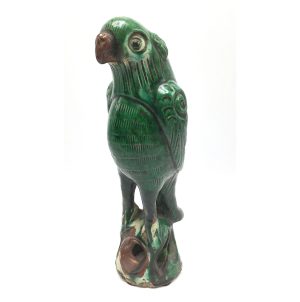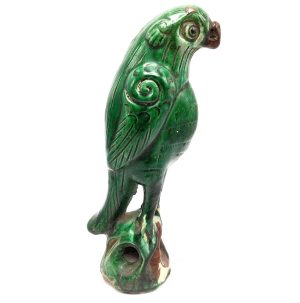SOLD. Antique/Vintage Porcelain Parrot, Chinese Republic (16945NRE)
$295.00SOLD H: 9″ W: 3 ” D: 3.5 ” | FREE SHIPPING!
Chinese Republic ceramic parrots are commonly depiction as this one perched on an open rocky base. Porcelain parrots were produced for the domestic and export markets and sometimes sold in pairs leading some to believe they, like pairs of fish, symbolized the love and fidelity of married couples. This one has vivid polychrome colors, large eyes and stylized wings. This piece is in excellent condition.


